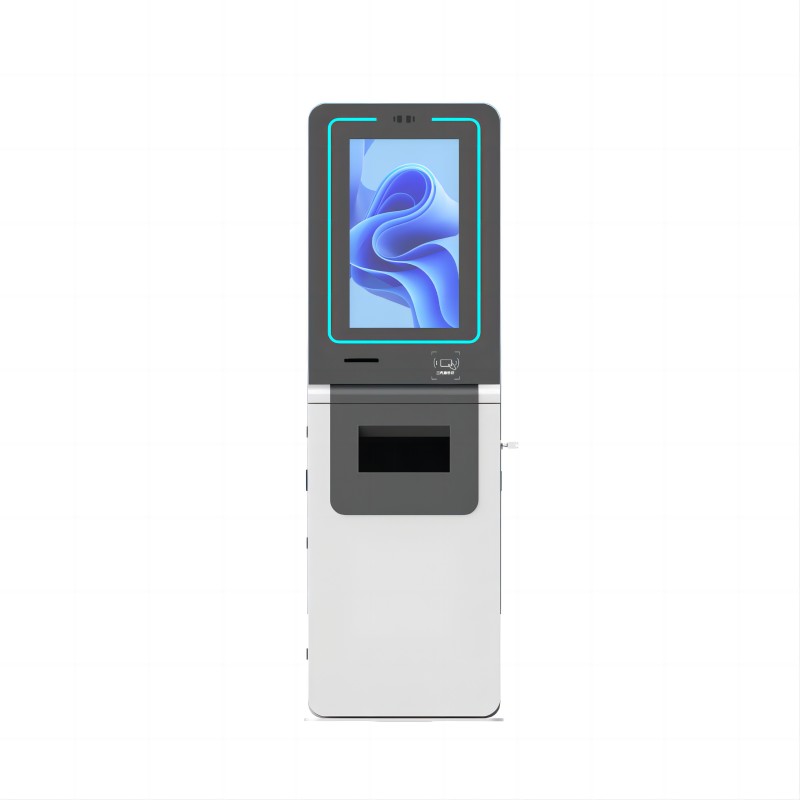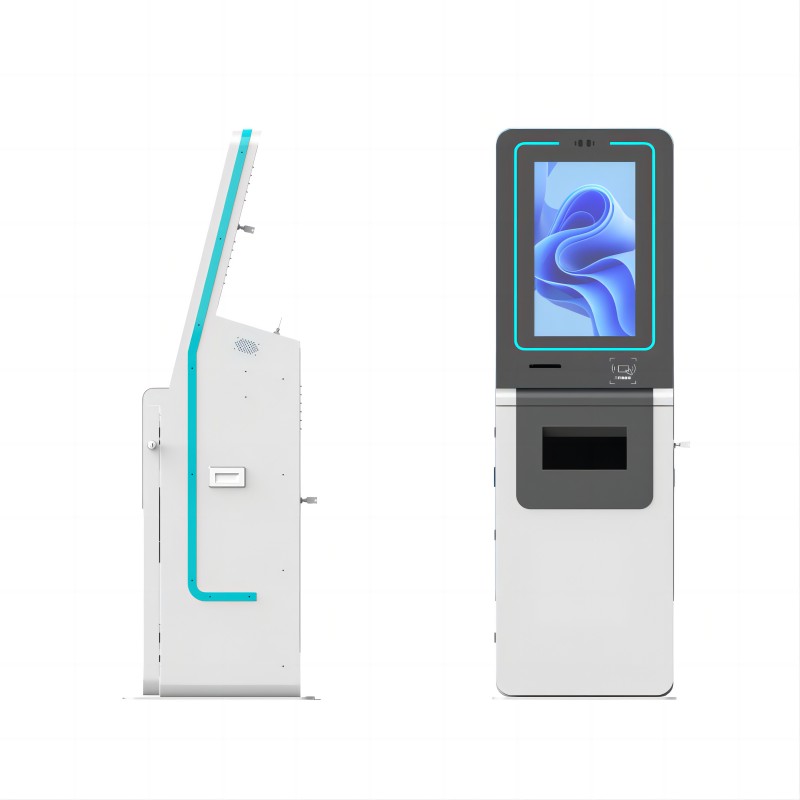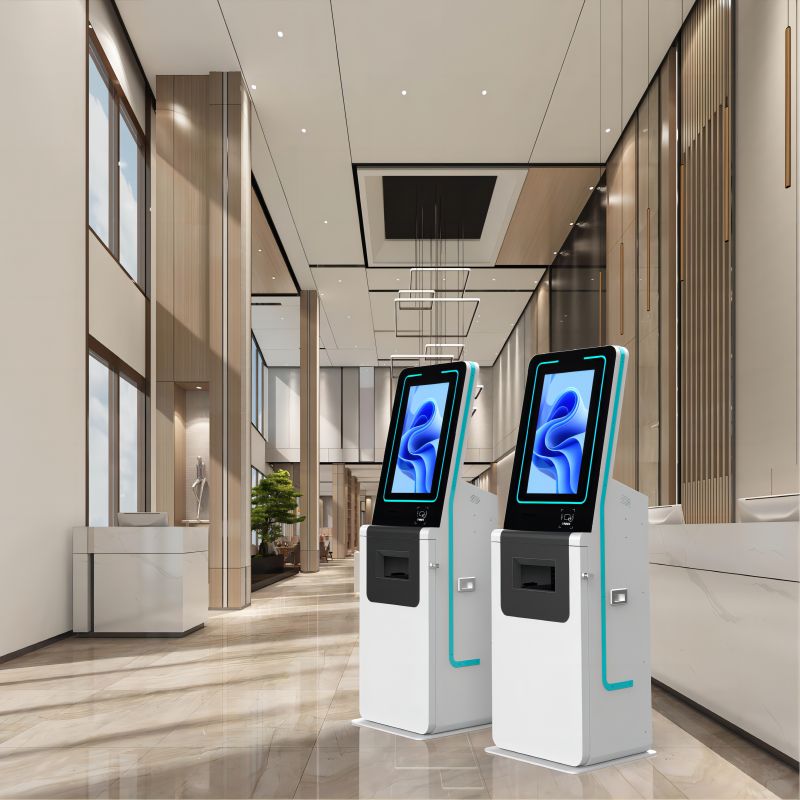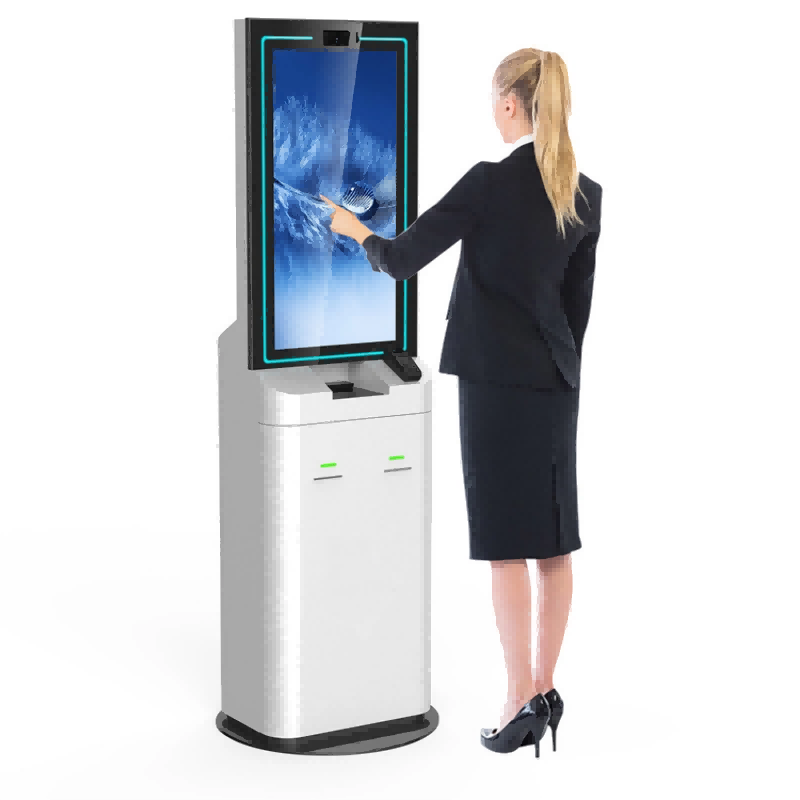
| Component | Description | Manufacturing Process |
|---|---|---|
| Enclosure/Chassis | The outer shell that houses all internal components. | 1. Sheet metal cutting, bending, and welding. 2. Surface treatment (e.g., powder coating). |
| Touchscreen Display | The interactive interface for customers to navigate and make selections. | 1. Sourcing from display manufacturers. 2. Integration into the chassis. |
| Payment System | Includes card readers, bill acceptors, and receipt printers for transactions. | 1. Assembly of payment modules. 2. Integration with software and kiosk body. |
| Computer/Processor Unit | The central processing unit that runs the kiosk’s software. | 1. Sourcing and assembling components (CPU, motherboard, RAM). 2. Installation in the chassis. |
| Barcode Scanner | Used for scanning prescriptions or product barcodes. | 1. Sourcing and testing of scanner modules. 2. Integration into the kiosk. |
| Dispensing Mechanism | Automated system for dispensing medications or printouts. | 1. Design and assembly of mechanical components. 2. Installation and calibration. |
| Software | Custom software that manages the user interface, payment, and dispensing functions. | 1. Development of the software. 2. Installation and testing on the kiosk. |
| Cooling and Ventilation System | Ensures the kiosk’s internal components stay cool and operate efficiently. | 1. Installation of fans or cooling systems. 2. Testing for thermal management. |
| Connectivity Modules | Wi-Fi, Ethernet, or 4G modules for network connectivity. | 1. Sourcing and installation of connectivity hardware. 2. Configuration for network access. |
| Power Supply Unit | Provides the necessary power for all kiosk components. | 1. Assembly of power unit. 2. Integration with internal wiring and components. |
Kiosk pharmacy integrates various hardware and software components to provide efficient self-service. Hardware includes a durable enclosure housing a touchscreen display for user interaction, a payment system with card readers and receipt printers, a computer unit running the kiosk's software, and a barcode scanner for prescription validation. Additionally, a dispensing mechanism manages medication distribution, while cooling systems ensure optimal operation. On the software side, it features a user-friendly interface for medication searches and transactions, secure payment processing, and integration with pharmacy databases for accurate prescription management. This combination enhances operational efficiency and customer convenience in pharmacy settings.

Pharmacy kiosks streamline operations and enhance customer service by offering a range of applications and benefits. They allow customers to independently search for medications, print prescriptions, and make payments, reducing wait times and freeing up pharmacy staff for more complex tasks. These kiosks can handle over-the-counter sales, prescription refills, and medication pickup, all while integrating with existing pharmacy systems for accurate information. Benefits include improved customer satisfaction through quicker service, increased efficiency by automating routine tasks, and reduced errors by providing clear, digital interfaces. Overall, pharmacy kiosks enhance operational efficiency and patient convenience.

When customizing a pharmacy kiosk, consider options such as enclosure design, touchscreen size, and branding elements to match your pharmacy's aesthetics and space requirements. Customizable software features include tailored user interfaces, specific medication databases, and integration with pharmacy management systems. Additional options might include specialized dispensing mechanisms or advanced payment systems. When purchasing, evaluate the kiosk’s compatibility with existing systems, ensure it meets regulatory requirements, and consider vendor support and warranty services. Balancing these factors will help ensure the kiosk meets operational needs and enhances customer experience effectively.

The cost of a pharmacy kiosk varies based on features, customization, and vendor. Basic models might start around $5,000, while advanced configurations with integrated dispensing and payment systems can exceed $15,000. Ongoing costs include software maintenance and potential hardware upgrades. The return on investment (ROI) is realized through increased operational efficiency, reduced labor costs, and enhanced customer service. By streamlining prescription handling and reducing wait times, kiosks can lead to higher customer throughput and satisfaction, ultimately generating more revenue and improving the overall profitability of the pharmacy.

| Type | Size (H x W x D) | Design Features | Price Range (USD) |
|---|---|---|---|
| Self-Service Prescription | 6 ft x 2 ft x 2.5 ft | Touchscreen, secure payment terminal, printer | $5,000 - $12,000 |
| Over-the-Counter (OTC) | 5.5 ft x 2 ft x 2 ft | Interactive display, barcode scanner, dispenser | $3,000 - $8,000 |
| Prescription Drop-Off | 6 ft x 2.5 ft x 2.5 ft | Lockable compartments, touchscreen, camera | $4,000 - $10,000 |
| Consultation Kiosk | 6 ft x 3 ft x 2.5 ft | Video conferencing, privacy screen, touchscreen | $7,000 - $15,000 |
| Health Check Kiosk | 6.5 ft x 3 ft x 2.5 ft | Blood pressure monitor, weight scale, touchscreen | $6,000 - $13,000 |
| Mobile Pharmacy Kiosk | 5 ft x 2 ft x 2.5 ft | Portable, touchscreen, secure storage | $4,500 - $9,500 |
Identify Needs: Determine the specific needs of your pharmacy, such as the types of services the kiosk will offer (e.g., prescription pick-up, consultation).
Set a Budget: Establish a budget based on the type of kiosk you need and the features required.
Research Vendors: Look for reputable vendors with a history of producing high-quality pharmacy kiosks. Check reviews, case studies, and customer feedback.
Evaluate Customization Options: Consider how much customization you need in terms of design, branding, and additional functionalities. Choose a vendor that offers flexible options.
Request Demos: Ask for a demo or visit a site where the kiosk is installed to see it in action. This will help you assess the ease of use and the quality of the kiosk.
Check for Compliance: Ensure the kiosk meets relevant health, safety, and accessibility standards and is compliant with local regulations.
Negotiate Terms and Purchase: Once you've selected a vendor, negotiate the terms, including warranty, maintenance, and support services, and proceed with the purchase.
Installation and Training: Coordinate with the vendor for installation. Ensure your staff is trained on how to use and maintain the kiosk properly.
What did our happy clients say?
We recently installed the pharmacy kiosk from Lean Kiosk System, and it has completely transformed our workflow. Patients love the convenience, and we appreciate the reliable performance. Highly recommend Lean Kiosk System for any pharmacy!
Lean Kiosk System delivered a top-quality product with our new pharmacy kiosk. The installation was seamless, and it's incredibly user-friendly. We're very satisfied and would recommend them to anyone looking to upgrade their pharmacy services.
Our pharmacy's efficiency has significantly improved thanks to the kiosk from Lean Kiosk System. The design is sleek, and the technology is robust. We're very happy with our purchase and recommend Lean Kiosk System to all!
The pharmacy kiosk from Lean Kiosk System exceeded our expectations. It's intuitive for both staff and customers, and the customer service has been outstanding. We highly recommend Lean Kiosk System for their excellent product and support.